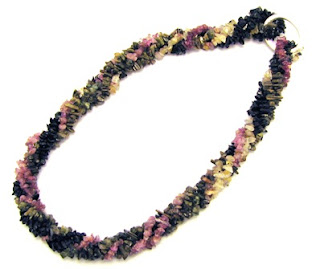
Beautiful stones wouldn't you agree!
You can see it here http://www.etsy.com/treasury_list.php?room_id=25970

Beautiful stones wouldn't you agree!
You can see it here http://www.etsy.com/treasury_list.php?room_id=25970
 Schiller or Adularescence is what gives Moonstone its 'glow' or 'sheen', which is usually silver or blue.
Schiller or Adularescence is what gives Moonstone its 'glow' or 'sheen', which is usually silver or blue.Moonstone comes in several colors, the more common being white, gray, and peach. White Moonstone, with an especially strong bluish sheen, is often called Rainbow Moonstone, and is actually not a moonstone but another feldspar mineral called Labradorite; it is very popular to use in jewelry. The most valuable is the blue Moonstones from Sri Lanka, particularly as there are fewer being found thus driving up prices for this most beautiful of stones.
 Moonstone comes in a variety of color, though the more common ones are gray, peach, and white.
Moonstone comes in a variety of color, though the more common ones are gray, peach, and white. Rainbow Moonstone has a lovely blue sheen that is very desirable by jewelry artisans, although the name is a misnomer as its actually a type of Labradorite instead of Moonstone.
Rainbow Moonstone has a lovely blue sheen that is very desirable by jewelry artisans, although the name is a misnomer as its actually a type of Labradorite instead of Moonstone. Obsidian comes in a variety of colors including black, brown, reddish brown, and dark green.
Obsidian comes in a variety of colors including black, brown, reddish brown, and dark green. Obsidian can also form two special types called Rainbow Obsidian (left), and Snowflake Obsidian (right).
Obsidian can also form two special types called Rainbow Obsidian (left), and Snowflake Obsidian (right). Obsidian has been used as arrowhead points by tribes in the past, and today is commonly used in jewelry.
Obsidian has been used as arrowhead points by tribes in the past, and today is commonly used in jewelry. On the left is regular Howlite, on the right is Howlite that has been dyed blue to imitate turquoise (ironically these are shaped as a buffalo!)
On the left is regular Howlite, on the right is Howlite that has been dyed blue to imitate turquoise (ironically these are shaped as a buffalo!) Tourmaline can form in a variety of colors.
Tourmaline can form in a variety of colors.
One of the most interesting properties of tourmaline is that it is pleochroic – this means that it appears different colors when seen from different axes of the crystal. It also has electrical properties, and when heated can become positively and negatively charged, attracting dust particles. In fact, the word tourmaline comes from the Sinhalese word turamali, meaning “stone attracting ash”. Tourmaline can be found as prismatic crystals in a hexagonal shape, from very large to the very small.
Tourmaline can be found as prismatic crystals in a hexagonal shape, from very large to the very small.
Tourmaline is most often associated with igneous rocks, such as granites or pegmatites, however it can be found in some metamorphic rocks. It is commonly found with other minerals such as quartz, beryl, and topaz. Tourmaline can also occur inside quartz as thin, needle-like crystals, forming what is known as tourmalinated quartz. While found all over the world, tourmaline has been found in great quantities in the USA, in particular the states of Maine and California. Most tourmaline used in jewlry comes from the elbaite group.
Most tourmaline used in jewlry comes from the elbaite group.
Tourmaline is the birthstone for October. In metaphysical sense, tourmaline is said to dispel negative energies and enhance the mind. The black variety schorl, is said to have been used in the past to create mourning jewelry. The pink and green varieties are said to have been used as funeral gifts by some Native Americans.
If there's a stone you would like to know more about - drop me a line! Have a mystery stone? Feel free to post a comment about it, including a link to a picture, and it could be featured on this blog!
Tourmaline Facts:
Chemical composition: Varied - in general it is
Na(Mg,Fe,Li,Mn,Al)3 Al6(BO3)3 Si6O18 (OH,F)4
Crystal System: Hexagonal
Color: Varied: pink, green, brown, yellow-green, dark blue, black (most abundant)
Habit: Prismatic crystals or massive
Fracture: Uneven or subconchoidal
Cleavage: Poor, rhombohedtral
Luster: Vitreous
Hardness: 7
Specific Gravity: 3
Streak: Colorless/White
Occurrence: Worldwide
References
A Guide to Rocks and Fossils by B. Busbey III, R. R. Coenraads, P. Willis, and D. Roots. Published 2002 by Fog City Press. ISBN: 1877019518
Rocks, Minerals, & Fossils of the World by C. Pellant and R. Phillips. Published 1990 by Little, Brown and Co. ISBN: 0316697966
Wikipedia – Tourmaline. http://en.wikipedia.org/wiki/Tourmaline
 Color
Color Tiger eye (left), labradorite (back), moonstone (right)
Tiger eye (left), labradorite (back), moonstone (right) Different minerals create different streak colors. From left to right: chrysocolla, malachite, galena, specular hematite, azurite
Different minerals create different streak colors. From left to right: chrysocolla, malachite, galena, specular hematite, azurite Flourite (left) is not as hard as this Rose Quartz (right).
Flourite (left) is not as hard as this Rose Quartz (right). From Left to Right: Various Quartzes (Rutilated Quartz, Double Terminated Quartz, Rose Quartz), Malachite (all three in the middle), and Calcite (all three on the right).
From Left to Right: Various Quartzes (Rutilated Quartz, Double Terminated Quartz, Rose Quartz), Malachite (all three in the middle), and Calcite (all three on the right). Garnet, Calcite, and Muscovite
Garnet, Calcite, and Muscovite On the left is Galena, Anhydrite on the right.
On the left is Galena, Anhydrite on the right.
